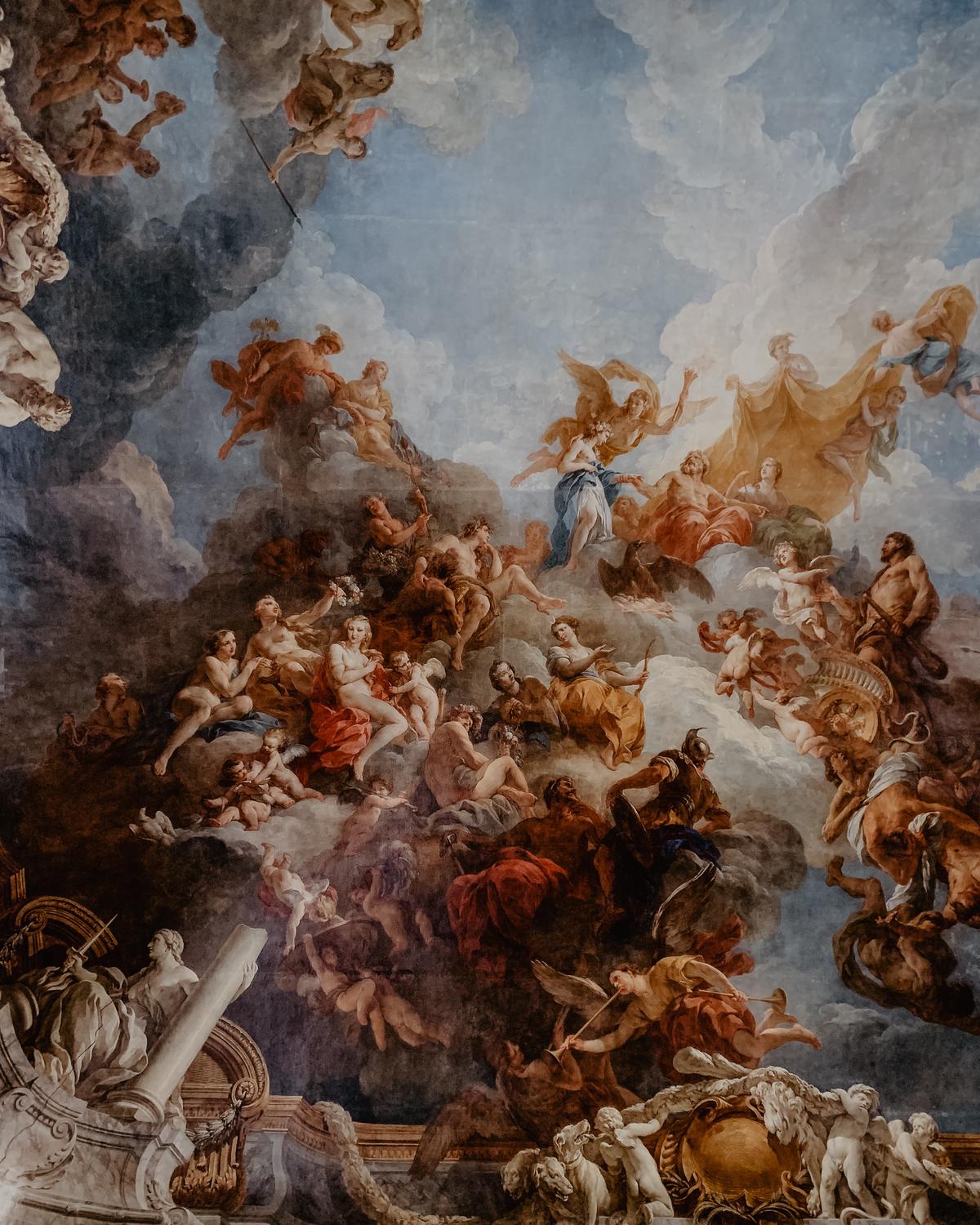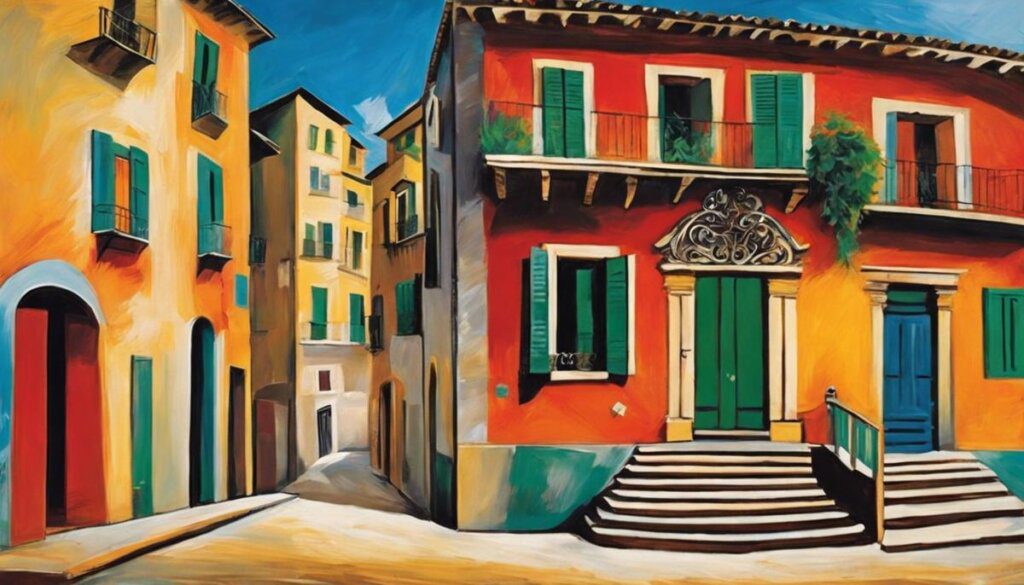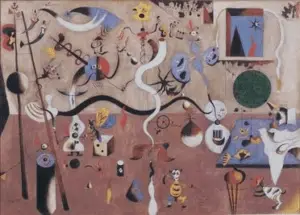Delving deep into the enigma of the prodigious artist, Pablo Picasso — his life, ingenious artworks, and revolutionary impact on the world of art — unlocks a world filled with profound creativity and limitless exploration. Born amidst the beautiful landscape of Málaga, Spain, Picasso had begun his foray into art at a remarkably young age. His journey from an aspiring young artist to becoming one of the most influential figures in the world of modern art is imbued with intrigue. Picasso’s diverse artistic phases, primarily the Blue and Rose periods, remarkably reflect the stature of his emotional psyche at different life stages, thereby holding the mirror to his vibrant personal journey.
Illuminating Picasso’s Early Life
Title: The Profound Impact of Picasso’s Formative Years on His Artistic Mastery
Setting foot in the world of art is akin to embarking on a journey of profound exploration, intrigue, and remarkable self-discovery. One particular artist, synonymous with unprecedented innovation and creativity, stands tall among the Pantheon of great masters. Pablo Picasso, a Spanish virtuoso, remains celebrated for his groundbreaking contributions to art. Underneath the fusion of vibrant colours, daring lines, and distinct shapes lies the story of his early life and upbringing, a tremendously influential narrative that defined his artistic journey.
Picasso’s birthplace, Malaga, Spain, offered burgeoning inspiration for the aspiring artist. His father, a painter and art teacher, was Picasso’s first mentor. This early immersion in the artistic sphere formed the fundament of Picasso’s artistic ideology. A relationship akin to a metaphorical canvas, the father and son bond inspired and spurred the artistic genius within Picasso, eliciting an audacity to challenge traditional norms and embrace the avant-garde.
The deep shadows and stark emotional resonance that dominated Picasso’s Blue and Rose periods reflect an undeniable correlation with his life experiences. Overcoming hardships and personal struggles, Picasso’s early years were fraught with a myriad of challenges. The death of his close friend Carlos Casagemas plunged Picasso into a depressive state, marking the beginning of his Blue Period. Subsequently, the artist channelled his melancholy into his paintings, yielding haunting, monochrome compositions.
Transcending the Blue Period, a new relationship with Fernande Olivier heralded the Rose Period. Picasso’s canvas took on a warmer palette, underlined by serene compositions that echoed his happiness and emotional rejuvenation. This shift denotes Picasso’s capacity to mould his life experiences into eloquent, visual narrations.
The significance of Picasso’s Spanish heritage cannot be overstated. Rooted in his cultural DNA, the impact of bullfighting and Flamenco, intrinsic elements of Spanish life, is evident in his works. Picasso’s fascination for these cultural symbols, deep-seated in his childhood experience, contributed to characterful depictions that transcended mere artistic portrayal and ventured into the realm of cultural commentary.
Picasso’s African art-inspired Period, also known as the Proto-Cubism phase, reveals the artist’s unquenchable thirst for novel artistic expression. Amidst a backdrop of colonial expansion and anthropological museums showcasing African art, Picasso found profound inspiration. The traditional masks and symbology prevalent in African art sparked Picasso’s path towards creating the movement of Cubism, a paradigm shift in Western art.
In conclusion, the narrative of Picasso’s formative years fashioned more than an artist; it sculpted an audacious, endlessly explorative pioneer who redefined the contours of visual representation. Each stroke of his brush, vivid or subdued, rugged or smooth, served as a testament to his upbringing and early life experiences. A canvas for Picasso was not merely an object awaiting transformation, but a reflective mirror capturing the nuances of his life journey. Picasso’s art, a fusion of experiences and influences, stands as indelible evidence of how transformative encounters in an artist’s early life can shape the path of creativity. Thus, in Picasso’s case, the line between life and art blurred, creating a poignant and enduring artistic legacy.

Analyzing Picasso’s Noteworthy Artworks
Picasso’s Artworks: A Deep Dive Into Their Traits, Evolution, and Significance.
Picasso, an epitome of artistry and imagination, personified his thoughts and experiences into some of the world’s most prodigious artworks. Armed with the tools he honed under his father’s mentorship, Picasso ventured into divergent stages, each marking a unique epoch in the artist’s life.
A significant chunk of Pablo Picasso’s work from the early 20th century could be categorised into periods that roughly match with stylistic shifts, each exhibiting incontrovertibly notable characteristics. Beyond the Blue and Rose phases, Picasso transitioned to the African art-inspired and analytical Cubism periods, shifts that altered the course of art history.
Influenced by Picasso’s fascination with African tribal sculptures, the African art-inspired period starkly marked the departure from traditional European ways. His artwork reflected the aesthetic rawness and geometric form of the tribal sculptures, forming a springboard into an artistic wave known as Primitivism.
Analytical Cubism followed, a phenomenon that revolutionised traditional perspective, dismantling objects into their abstract geometric forms. Picasso’s pioneering work, ‘Les Demoiselles d’Avignon’, ushered in this unprecedented style. Fragmented, abstract and monochromatic, Picasso’s compositions compelled the viewer to consider objects from multiple viewpoints simultaneously.
The hallmark of these periods was not only the visual aesthetic; they are also imbued with underlying meanings and themes that provide a captivating insight into Picasso’s life.
The primal energy of African art significantly inspired Picasso, correlating with radical changes in his style. Picasso’s work began to take a more angular, two-dimensional, and exaggerated form, bringing forth vibrant transformations that helped lay the foundation of Cubism.
As Picasso transitioned into his later styles, he revisited and reworked thematic compositions from his early periods. A notable theme is Picasso’s recurring reference to his Spanish heritage in his art. The depiction of bullfighting, flamenco dancers and myths signify his connection with Spain and further illuminate his stylistic evolution.
In the world of Picasso, he blurred the line between reality and imagination. The progression in his artistic approach mirrored the emotional arc of his life. His art served as a cathartic medium to reflect his experiences, his perceptions of the world, and his inner self, making the connection between his personal and artistic journey indisputable.
Undeniably, Picasso’s elegance, his defining usage of form and his ability to weave profound narratives within the images he crafted continue to influence the art world. His work is a testament not only to his innovative genius but also to the far-reaching resonance of personal narratives within art. Picasso has left a significant and lasting legacy within the realm of art, challenging conventional definitions and paradigms, forever changing the way we perceive the power of the brushstroke.
Through his ability to encapsulate emotions, his bold and innovative styles, his personal stories, and his redefining of artistic boundaries, Picasso continues to inspire artists and art enthusiasts to this day, reaffirming his deserved standing as a giant of 20th-century art.

Understanding Cubism: Picasso’s signature style
Unveiling Cubism: Picasso’s Artistic Revolution
Stepping into the world of Cubism, the avant-garde art movement might have us traversing through an art landscape filled with geometrically fragmented forms, reshaped dimensions, and dissected realities. At its crux, it was Pablo Picasso, the virtuoso painter from Spain, who, hand in hand with fellow artist Georges Braque, heralded this aesthetic revolution into the early 20th-century art scene. Picasso’s radical redefinition of pictorial space and form significantly bent traditional art norms and brought forth an unprecedented wave of new ideas within the art world.
Picasso’s audacious enigma, ‘Les Demoiselles d’Avignon’, teetering on the edge of Abstract Art and Cubism, marked a revolutionary departure from the conventional portrayal of the human form. The painting’s impact was colossal – it did not merely represent the five women, but rather dissected them into a series of jagged geometric planes, disrupting centuries-old notions of perspective, and thus, Cubism was born.
At the centre of Cubism’s philosophy is the notion of viewing the subject from multiple angles, an endeavour to represent all possible perspectives of reality. This fascination with ‘multiple perspectives’ echoed in Picasso’s series of paintings of musicians, dancers, and mothers with children, where he distorted and fragmented human figures into abstract geometrical patterns, presenting a different way to perceive reality.
Analytical Cubism, considered the first phase of this art movement, saw Picasso and Braque reducing their subjects to an amalgam of fragmented geometric shapes and neutral tones. In contrast, Synthetic Cubism, a subsequent phase coined later, propelled towards adding textures, collage elements, and more engaging hues into these artworks, creating the illusion of layered multi-dimensional structures. Thus, by manipulating conventional form and perspective, Picasso and his contemporaries infused fresh life and dynamism into static art subjects.
Another innovative characteristic of Cubist practice was the introduction of ‘pasted paper’ or collage into visual artwork. The inclusion of various materials such as newspaper clippings, oilcloth, or wallpaper, contributed towards breaking the boundary between painting and sculpture, a precedent led by Picasso’s ‘Still Life with Chair Caning’. This concept represented a critical departure from the traditional mediums of painting and enriched the vibrant avenue of mixed media art forms we know today.
Picasso’s cubist journey not only disturbed the traditional importance of literal likeness in portraiture but also shook the foundations of artistic representation as we know it. Through Cubism, he shattered conventional perspective, reassembled it, and thereby breathed a new perspective into the realm of artistic imagination. As such, Cubism led to successive modernist movements in the art world, from Dada and Futurism to Surrealism and Expressionism.
The seismic shift bought about by Cubism is not just confined to the annals of art history. Its elemental spirit continues to leave its fingerprints on contemporary art, design, and beyond. Picasso’s fascination with different perspectives was not just a paradigm shift in the way art was conceptualised; rather, it encouraged contemporaries and subsequent generations to see the world through a fluid lens, ushering artistic freedom and diversity into the wider art echelons.
Therein lies the individual beauty and shared power of Cubism. In its essence, Cubism didn’t merely shift the art world’s perspective; it emblazoned a lasting, transformative signature upon it, with Pablo Picasso wielding the proverbial pen. An imaginative exploration into the varied facets of reality, ratified by the accepting hands of willing viewers, triumphs as the testament to Picasso’s indelible ode to the art world.





Responses